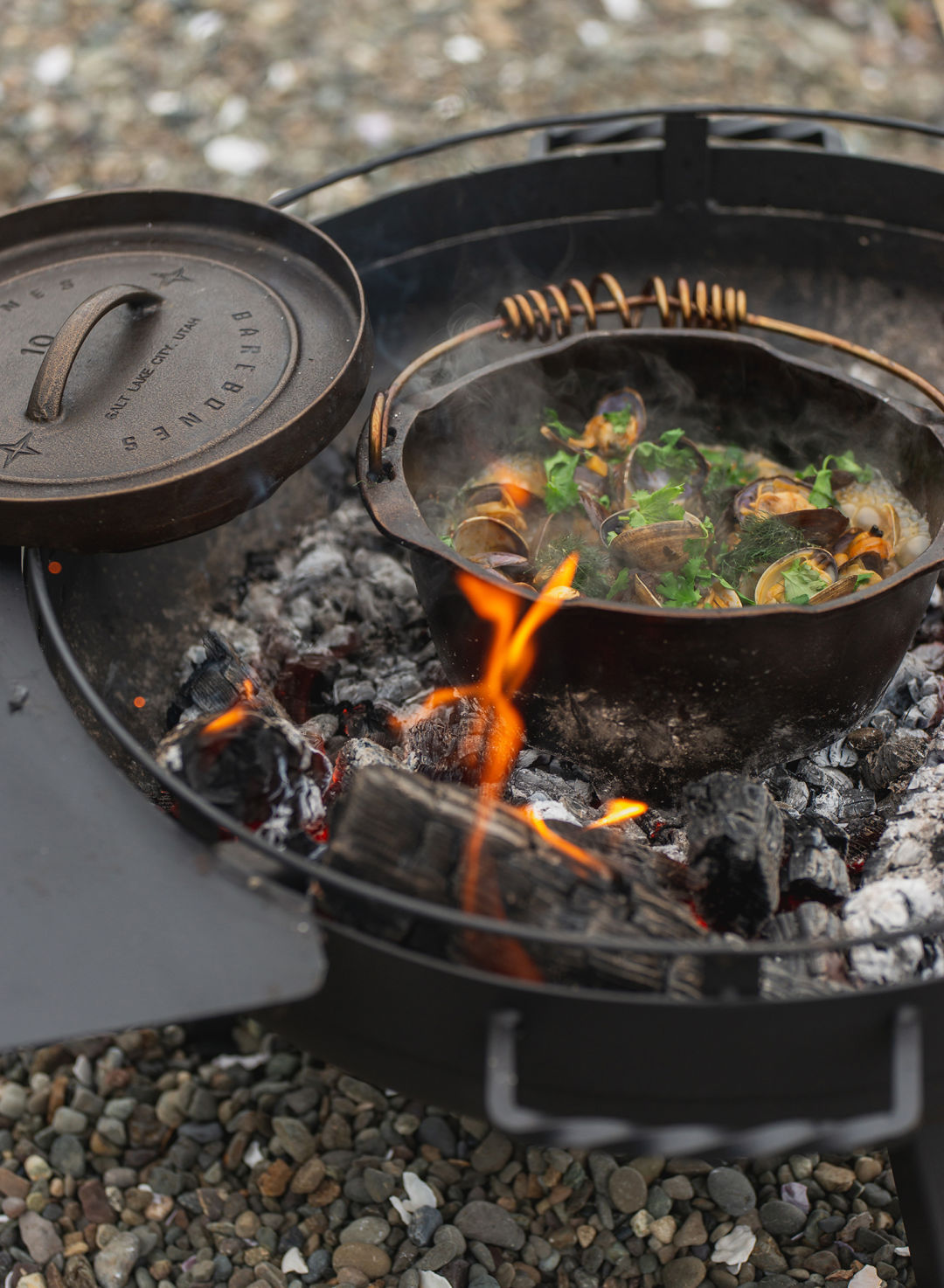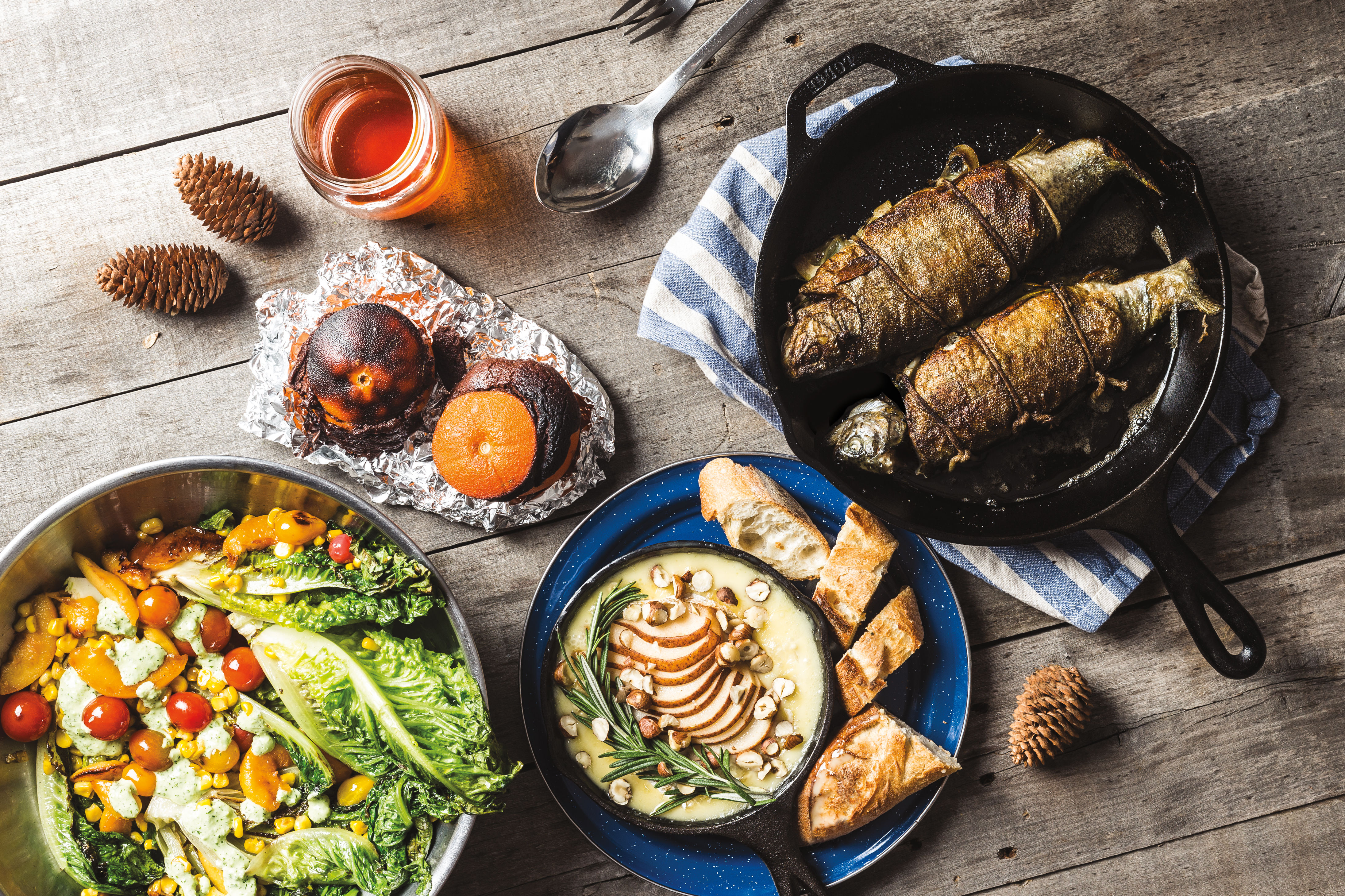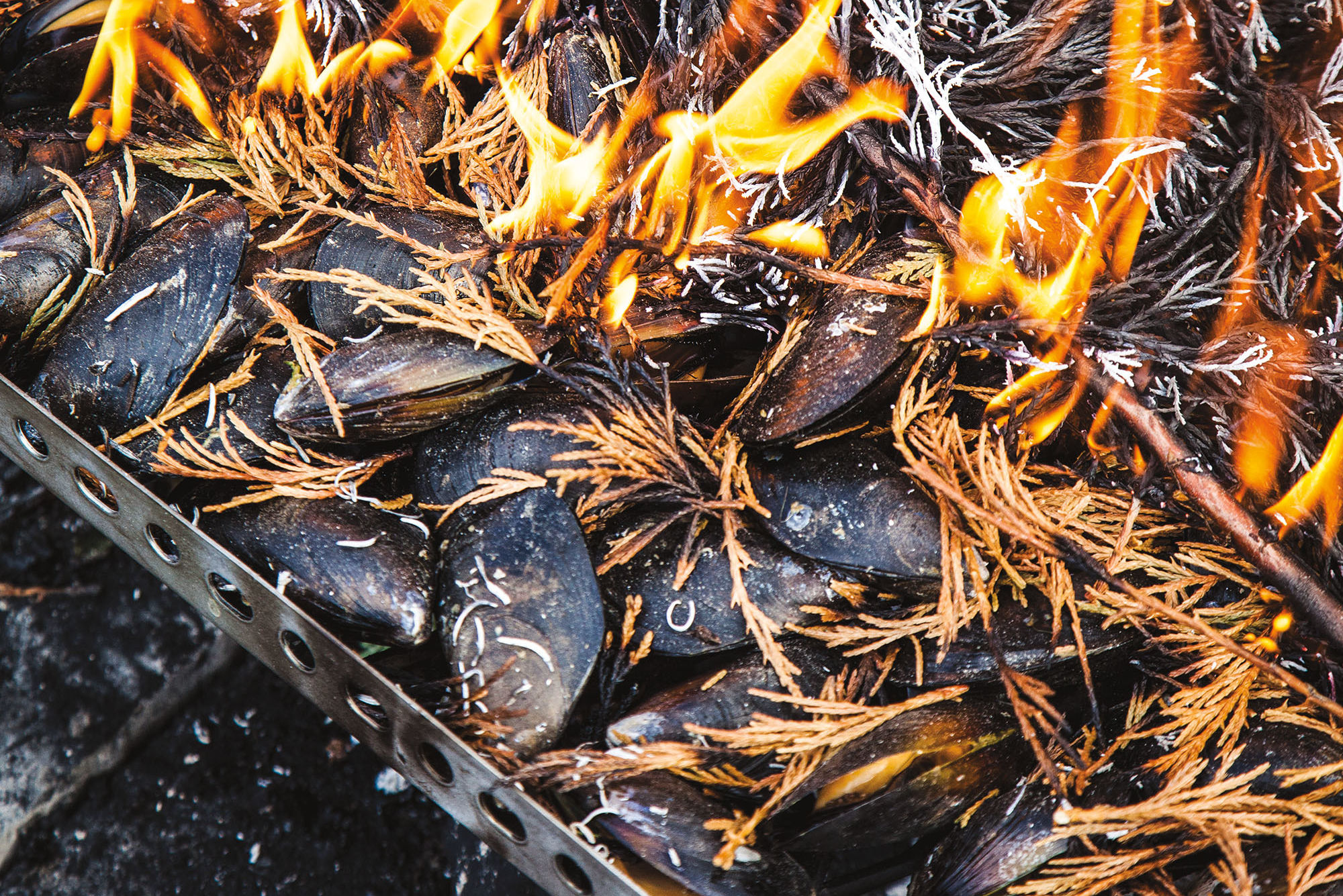How to Dutch Oven Cook like a Pro

Image: Joshua Chang/Foundry 503
Y
ou can cook pretty much anything in this bad boy, from stews and braised meats to baked bread, cobblers, and pies. That’s what makes the dutch oven a versatile yet immensely underrated way to make a meal while camping. But if you’ve never touched a dutch oven before, let alone tried your hand at open-fire cooking, fear not. We’ve got you covered with tips and tricks from Portland-based chefs Mona Johnson and Jaret Foster, who have been cooking with live fire since they both were kids.
It goes without saying how romanced the pair of them are by open-fire cooking. They’ve built their entire company, Tournant—which offers farm-to-fire cooking events and classes—around it. And for good reason. “We don’t have to be beholden to a kitchen to create a beautiful meal for people,” Johnson says.
Battling the Elements
Johnson and Foster have cooked in nearly every condition imaginable: snow, sleet, and rain, but wind, Johnson cautions, “is the one that would be the most dangerous.”
Before starting your fire, Foster recommends clearing the area around it, being aware of wind direction, and building wind barriers by stacking logs or rocks. And because we live in a wildfire-prone state, it’s important to be mindful of seasonal campfire bans.
“When we cook, we always have fire extinguishers with us,” Johnson says. If you’re not near a water source, she suggests having a couple of buckets or jugs of water on hand to put out coals or embers.
Respect Your Mother
Foster says cooking fires should be built with well-seasoned hardwoods such as fruit wood or oak in addition to hardwood lump charcoal. Get the fire going at least 40 minutes to an hour before you start cooking to let it burn down to a bed of glowing coals, he says.
“We always keep what we call a ‘mother fire’ because the worst thing in the world is if you’re right in the middle of getting to the good part of the cooking and you’ve run out of heat,” Foster says.
He suggests scraping some of the coals to the side, which will serve as the cooking area with the mother fire burning beside it.
Nestle the dutch oven over the hot coals and put coals over the lid as well. This generates top-down heat exactly like an oven. When managing the heat, it’s about “trusting your senses,” Johnson says. If you’re food is cooking too fast, you can remove some of the coals from underneath the dutch oven.
“One of the magic things about the dutch oven,” however, is the “low-and-slow braise,” Johnson notes. The dutch oven is known for being a slow-cooker, ideal for when you’re looking for something less hands-on. “You put all the ingredients in,” Johnson says, “and they just slowly simmer and meld together to create something more complex.”
Tournant’s Hama Hama 2-Clam Stew with Chickpeas & Burnt Onion Dashi
Serves 4–6
- 1 lb each Hama Hama Manila and Purple Savory clams, rinsed
- 1 cup diced onion
-
½ cup each diced carrot, celery, and
fennel - ½ cup sofrito*
- 2 cups cooked chickpeas
- 1 cup dry white wine
- 4 cups burnt-onion dashi** (can sub instant dashi or vegetable stock if needed)
- 1 cup chopped fresh herbs (parsley, dill, mint, thyme, cilantro, etc.)
- Extra-virgin olive oil
- Sea salt
- Prepare fire using wood or hardwood lump charcoal and allow to burn down to hot coals.
- Move grill grate aside and nestle a four-quart dutch oven into the coals.
- Add several glugs of olive oil to dutch oven, then add diced onion, carrot, celery, and fennel. Cook, stirring often, until veggies begin to soften but not brown. If pot is too hot, remove some of the coals from underneath it.
- Season vegetables with salt, then add sofrito and chickpeas to pot, stirring to combine.
- Add white wine and allow to simmer away almost completely.
- Add dashi and bring to a simmer.
- Add both types of clams to the pot and place lid on top.
- Simmer stew, stirring occasionally, until clams open and are cooked through. Taste broth and season with salt if necessary.
- Add fresh herbs and drizzle generously with olive oil. Serve directly out of dutch oven with lots of crusty bread.
*Sofrito
- 1⁄3 cup olive oil
- 4 medium yellow onions, peeled, halved, and thinly sliced
- 1⁄2 cup tomato purée
- Sea salt
Heat oil in a dutch oven over medium high heat. Add onions and a few pinches salt, then cook, covered, stirring occasionally, until onions begin to soften and release their liquid. Lower heat to medium low and continue cooking, stirring often (add a splash of water if sticking to the pan), until onions are melted, deep golden brown, and caramelized. Add tomato purée and cook until thickened, season with salt, cool, and refrigerate until needed.
**Burnt Onion Dashi
- 2 medium yellow onions, skin on, split through equator to create 4 halves
- 1 4-by-4-inch sheaf of kombu (or equal amount of kombu in smaller dimensions)
Preheat large cast-iron skillet over medium high heat. Place onions cut side down in hot, dry skillet and allow to cook without disturbing until deeply charred and blackened on the cut side. Transfer onions to a large ovenproof pot with a tight-fitting lid. Add 2 quarts water and bring to a boil over high heat. Put lid on and place a 350-degree oven for a minimum of 1 hour (up to 3 for a richer flavor), checking often to ensure onions are covered with liquid. Add water to keep onions submerged. In a separate heatproof container, pour 1 quart boiling water over kombu and steep for an hour. Remove kombu and discard, reserving the soaking water. Strain onion broth through fine mesh strainer, pressing solids to extract all golden liquid. Combine with reserved kombu dashi. Season with sea salt to taste.
The Tournant chefs say this a great umami-rich (and vegan) recipe to have on hand for flavor building and can be made in advance and frozen. If time is of the essence, feel free to sub instant dashi, or vegetable stock if desired. We also sometimes make a quick dashi over the flames with seawater and kombu.




